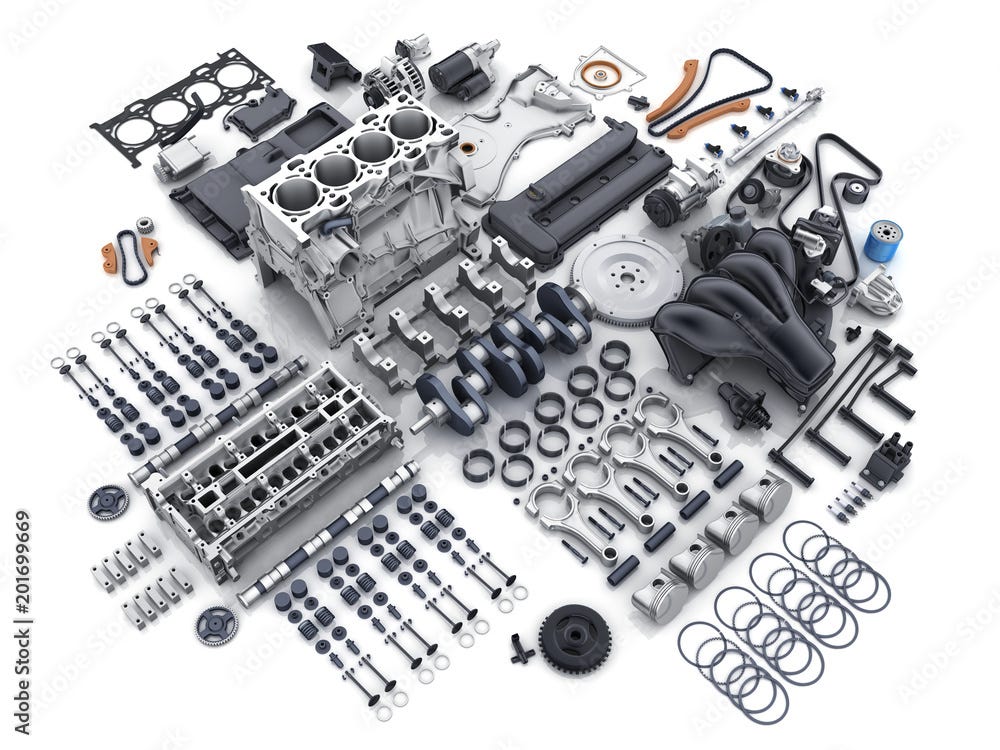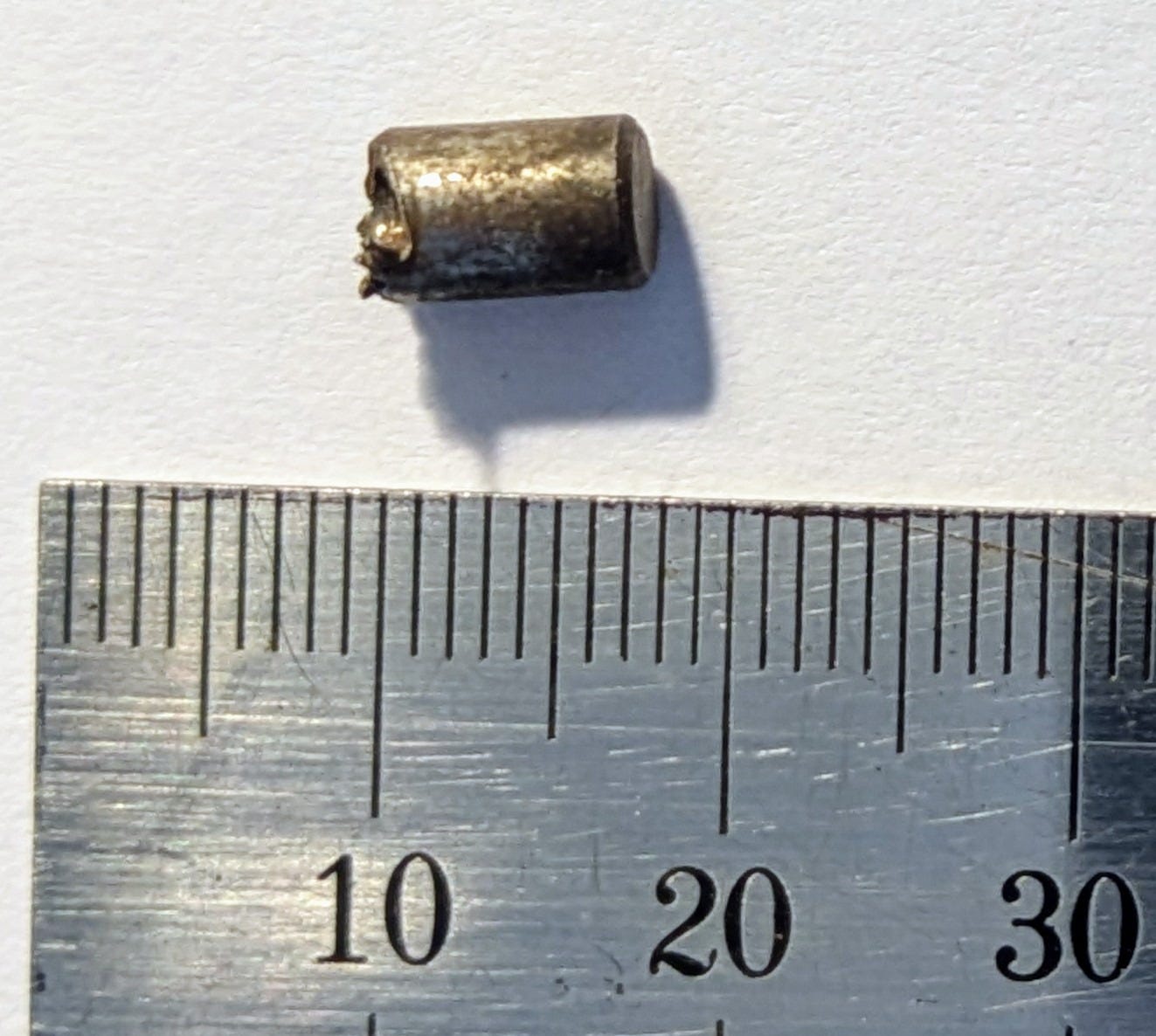Understanding Business as a System
How the whole is greater than the sum of its parts.
“Every time a business fails (including yours)
it is because that business FAILED to function as a system.”
Introduction
Today’s post will be a bit long, but it is an important step to understanding how business works. Even just writing “how business works” conveys implicitly, magically, the concept of a system.
So stick with me, even if you don’t have a technical background, because the secret of a Successful Business will be revealed to you in this article. It won’t be super obvious: you’ll need to spend some time thinking about these concepts. At first, you might not grasp the import and scope of what I am telling you. But be assured, that every time a business fails (including yours) it will be because that business FAILED to function as a system in the way I have defined it.
My background in Systems
My background is as a Systems Software Engineer. Designing, constructing, and implementing a reliable bug-proof system (especially realtime multitask embedded computer control systems for machinery) is how I started my career.
Understanding a thing's underlying nature as a working system is necessary to understand it itself.
So, let’s look at the system's definition and some examples, then talk specifically about the business itself.
What is a system?
The dictionary definition is:
A set of things working together as parts of a mechanism or an interconnecting network.
The etymology of system is surprisingly old, dating from the 1610s, to mean "the whole creation, the universe," from Late Latin systema "an arrangement, system," from Greek systēma "organized whole, a whole compounded of parts," from stem of synistanai "to place together, organize, form in order," from syn- "together" + root of histanai "cause to stand" (from PIE root *sta- "to stand, make or be firm"). The notion is "a combination or assemblage of parts or things forming or adjusted as a regular and connected whole." [source: etymonline.com]
My specific definition of System
I would like, however, to propose this definition for us to consider today:
A system is a group of interconnected components that work together to achieve a specific function or goal. It is an entire entity, designed for completeness and to produce more than it consumes. This surplus is used to perform useful work or maintain healthy vitality.
Key characteristics of a system
System Integrity: A system is a whole entity, designed for completeness.
Energy Surplus: A system produces more than it consumes and more than the work it performs.
Useful Work: The system has a specific function or goal and performs work to achieve that goal.
Distinct Entity: A system although separate from its environment, nonetheless functions within it.
Inputs and Outputs: A system interacts with its environment (aka the external world) by receiving inputs and producing outputs (which affect its external world).
Internal Feedback Mechanisms: A system has built-in mechanisms to regulate its performance, respond to changes, and maintain its design integrity. The better the design, the more robust the system is when challenged by unexpected inputs or changes in its operating environment. The worse the design, the more likely the system will fail (glitch) when confronted by unexpected inputs or conditions in its environment.
Understanding these concepts helps us analyze, design, and optimize systems across various fields, from engineering to biology and business.
Examples
Here's how this definition applies to three types of systems:
Internal Combustion Engine: Consists of components such as pistons, cylinders, valves, fuel injectors, and a spark plug. All the components harmoniously interact to convert chemical energy (from petroleum fuel) into mechanical energy (motion).
Inputs: Fuel, air, and electrical energy (for ignition), sensors
Outputs: Mechanical energy (rotation of the crankshaft), heat, and exhaust gases
Embedded Computer Control System: Comprises electronic hardware (microprocessor, sensors, actuators) and software (firmware, control algorithms). These components work together to monitor and control a machine's behavior, such as adjusting temperature, speed, or position.
Inputs: Sensor data (e.g., temperature, pressure, position), user commands, and power
Outputs: Control signals to actuators, displayed information, and diagnostic data
Living Organism: A living organism, like a human, animal, or plant, is a complex system composed of various organs, tissues, and cells. These components interact to maintain life processes, such as respiration, digestion, and circulation. The system, like an internal combustion engine, metabolizes carbohydrates for energy to power its cellular processes and to generate heat to maintain its nominal operating environment.
Inputs: Food, water, air, and light (for plants)
Outputs: Waste products (e.g., carbon dioxide, urine, feces), heat, and work (e.g., muscle movement)
Discussion
Note the implicit feeling that something synergistic, something bigger and more marvelous than its components could ever suggest, is taking place when we look at a system. It’s magic; the parts all somehow work together; it keeps running, mysteriously and automatically! Wwhaaat!?
The time when I disassembled a car engine
I remember overhauling a volkswagen engine by myself for a friend, (a long time ago when I was 23). I told him I could do it because I was planning on overhauling my own engine. I had just purchased the tools and a Howto Book. I had never worked on an engine before in my life … What could possibly go wrong? Um, everything! Everything could go wrong for somebody lacking experience.
Every single part had to be removed and cleaned, repaired, polished, or replaced. Once disassembled, It became a lifeless box of useless heavy steel things.
Uh-oh!
I was so pleased that everything went fine during disassembly … until, that is, the very end.
I had a problem with one little tiny steel pin which got jammed inside its hole and wouldn’t come out. My friend’s engine would definitely fail to run if I couldn’t get that little pin (5x9mm) out!
Easy, I thought, I’ll just use a drill bit to cut into the metal, then pull it out. The drill bit broke and the tip got stuck into the pin!! PANIC! I had no more money, I had to get the engine working, he would be so upset with me if I couldn’t follow through.
I found another old broken drill bit and tried very carefully to wedge it between the broken tip. Several tries failed. I was getting more worried. But finally, one last try and I was able to gently pull the pin out. Whew!
I saved that pin and kept it with me as a treasured memento of what perseverance even during panic can achieve.
I trembled when I put the engine back together. How could it work again?? Would it??
Did I get the engine reassembled? You bet I did.
Did it work? Even better than before!
Engines are a marvel of little tiny parts, brilliant human design, physics, mechanics, and chemistry which when combined properly together, function almost like a living organism. It’s still amazing that a car engine even works. But that’s the beauty and power of a system. That engine is more than a lifeless box of heavy clattering parts.
How does this relate to business?
Business: A business is a system composed of people, processes, and technology. It operates within an environment, such as a market, and seeks to create value for its customers and shareholders.
— Inputs: Capital, labor, materials, information, and energy
— Outputs: Products or services, revenue, and waste
In a business, each major component (purchasing/supply-product, selling/customers, finance/accounting, shipping, service, management, cash, etc) interact with each to keep the machine running.
The basic core concept of business is:
Buy Low; Sell High; Invest the surplus.
When the different parts work together and more energy (money/income) is generated than is consumed (expenses of all types), then the organism is healthy, continues to function and be useful in its environment, and has enough vitality to robustly weather unexpected disruptions (storms and invasions).
But fail to maintain vitality (just barely breaking even, or bleeding it dry of surplus energy) then eventually it will fail. We see that happen repeatedly when Private Equity Firms (aka Vulture Capital) firms get hold of a healthy company, leverage it with excessive debt, strip off assets (the surplus), slash expenses and layoff employees. It also happens when a CFO gets promoted to CEO: they only see the expense side of the equation, because that’s the part they understand. So they keep cutting costs, short-changing quality and service. Which often leads to lower sales, then more cost-cutting in a vicious cycle.
Conclusion
We will cover this topic of Business-as-a-System more in depth in The Book, in the chapter titled “The Business-in-a-nutshell Model”.
I’ll end this post with noting that I troubleshoot, both businesses and Newbiepreneurs business plans, from the standpoint of a Business-as-a-System. Unless your plan addresses the most basic critical components of the System, then the engine of the business will not run. And when something’s not working in the business or plan, it’s usually because a critical component is failing in the system and affecting the other parts.
Be sure to click the subscribe button below … and consider supporting this writing by becoming a paid subscriber!




